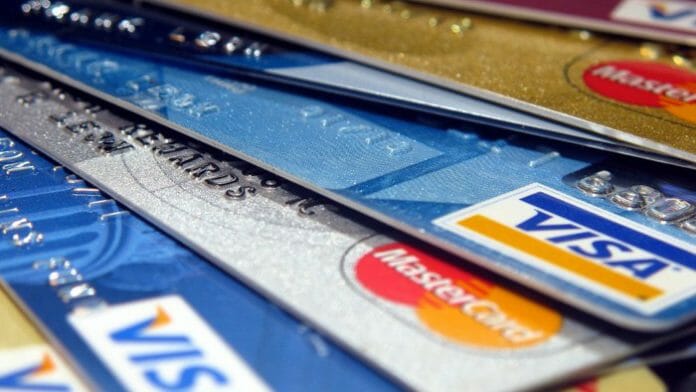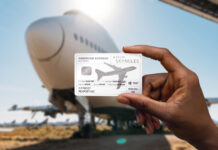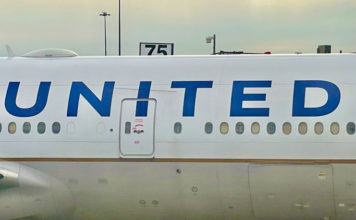
TravelingForMiles.com may receive commission from card issuers. Some or all of the card offers that appear on TravelingForMiles.com are from advertisers and may impact how and where card products appear on the site. TravelingForMiles.com does not include all card companies or all available card offers.
Some links to products and travel providers on this website will earn Traveling For Miles a commission which helps contribute to the running of the site – I’m very grateful to anyone who uses these links but their use is entirely optional. The compensation does not impact how and where products appear on this site and does not impact reviews that are published.
One of the biggest benefits I get from a number of my credit cards is that they waive foreign transaction fees when I’m traveling abroad and spending in a foreign currency. Considering how much I travel, the savings I make by using credit cards that don’t charge me foreign transaction fees run into hundreds of dollars every year.
But just using a credit card that doesn’t charge foreign transaction fees is often not enough to make sure you’re not paying more than you should be when making purchases abroad – I’m referring specifically to the practice of “dynamic currency conversion” so if you already know all about this feel free to move on to another post (there’s a pretty good rant about BA here if that’s more to your liking 🙂 ).
Dynamic Currency Conversion
Dynamic currency conversion occurs when a foreign business (hotel, retailer, eatery etc…) gives you the option to pay in your home currency when you come to paying. You may be in Paris but often you’ll find shops giving you the option to pay in US Dollars (if you happen to be using a US credit card) rather than Euros…and you should usually avoid this at all costs.
Here’s why.
You may be saving on foreign transaction fees thanks to the terms and conditions of your credit card but the exchange rate you’re being offered is almost certainly a poor one.
Take these two examples from my own recent travels:
Ikea Europe
For reasons I won’t bore you with here I recently purchased a few items from an Ikea store in Europe using my Chase Sapphire Reserve credit card and, when it came time to check out, these were the options I was given:

Had I chosen to go with the Dynamic Currency Conversion option (DCC) I would have been charged $133.51 for my purchase but, because I chose to let the transaction process in Euros, Chase/Visa were left in control of the exchange rate and I ended up paying $129.10
![]()
The $4.41 difference may not seem like much but it represents a 3.4% increase in my out-of-pocket cost.
Put simply, had I gone down the path of DCC, I would have negated any benefit I was getting by not incurring foreign transaction fees and paid even more on top.
I had a similar experience in South Korea.
I was using my Chase Sapphire Reserve card to buy a coffee and a muffin at Starbucks when the payment screen showed this:

Naturally I declined to pay in US dollars and went ahead with the transaction in Korean Won and, eventually, paid $4.99 when the transaction posted to my credit card.
![]()
Once again the monetary saving was pretty insignificant (just $0.19) but the percentage difference between what I paid and what I could have paid was 3.8%.
Now, imagine you are checking out of the Four Seasons Hong Kong after a leisurely 5 night stay:

Your invoice for HKD 20,803.75 is approximately $2,667 at the current exchange rate and that’s not too far off what you would pay if you charged the bill to your credit card in Hong Kong Dollars.

But, if you made the mistake of accepting a Dynamic Currency Conversion offer from the hotel, you would almost certainly end up paying 3.4% to 3.8% more (approx. $90 – $102) thanks to a poor exchange rate.
For what?
Just by taking the wrong option at check out you’re spending $100 more than you would have done by just paying in Hong Kong Dollars – you’re not getting any value out of this, you’re simply overpaying.
When using a credit card that doesn’t charge foreign transaction fees always pay in the local currency.
Another Way To Get Bitten
In certain circumstances it’s ok to pay in USD when abroad because, despite the fact you’re not actually in the US, the US dollar is a widely used currency in the country you happen to be visiting.
A great example of this is the island of Aruba in the Caribbean.
The local currency in Aruba is the Aruban Florin but, despite a lot of things on the island being priced in Florins, you’ll often find that the receipt arrives in USD – that’s just how it is and you simply have to pay in USD.

The exchange rate isn’t all that bad and a bonus of this is that you can get away with using some US credit cards that would normally charge a foreign transaction fee.
The credit card company ignores the fact that the transaction is coming from abroad and focuses on the fact that the charge is in US dollars….so no extra fees are added – great – but there can be a catch.
I used my Hilton Honors credit card from Amex (which normally charges foreign transaction fees) to test this out and, although I can’t find the paperwork to prove it, you’ll just have to trust that a $5 charge from Aruba appeared as a $5 charge on my Amex statement.
The fees section of the Amex Hilton Honors credit card shows this…..

….so had I used this card to pay in a foreign currency I would have incurred a fee of 2.7%. As the transaction went through in US dollars I wasn’t hit with any kind of fee at all.
However, that’s not how all credit cards work.
In the case of the Club Carlson Premier Rewards card this is what the fees section of the T&Cs shows:

Notice the difference to Amex’s T&C’s?
The Club Carlson card will charge a 2% fee if you use it to make any purchase outside of the US even if the transaction takes place in US dollars.
My Aruba transaction may have been in US dollars but, had I used my Club Carlson Visa card (which I’m not sure I’m going to be keeping), I would have incurred a 2% fee.
So be careful!
Bottom Line
Make sure you have a credit card that doesn’t charge foreign transaction fees, make sure you understand what charges your various credit cards will and will not levy and, most importantly, where possible always pay your bills in the local currency – Dynamic Currency Conversion will cost you money you should not be paying out.















![Deal: Save up to 20% on Air France/KLM bookings [Targeted] a row of seats in a plane](https://travelingformiles.com/wp-content/uploads/2024/03/air-france-new-business-class-5-741-80x60.jpg)

